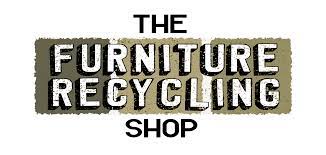6 Common Mistakes to Avoid When Using Furniture Recycling Online Services

In the digital age, the trend of furniture recycling has been uplifted to a whole new level through online platforms. The act of recycling furniture is no longer confined to local thrift shops or community recycling centers. Now, furniture recycling online services provide a seamless way to give old furniture new life, reflecting a growing consciousness around sustainability and environmental care.
However, as simple and efficient as it may seem, engaging with online recycling can be fraught with pitfalls if not approached with caution. In this guide, we’ll explore six common mistakes that individuals often make when using furniture recycling online services, and how to avoid them to ensure a smooth and eco-friendly experience.
1. Ignoring the Quality and Condition of the Furniture:
Mistake: Uploading pictures of broken or severely damaged furniture without understanding the recycling process.
Solution: Always check the condition and assess whether the furniture can be refurbished or reused. Online platforms usually have guidelines; adhere to them and provide accurate information about the furniture’s state.
2. Not Researching the Platform Thoroughly:
Mistake: Jumping onto the first website that appears without considering its authenticity or reliability.
Solution: Research the platform you intend to use. Look for reviews, user experiences, and their recycling policies. Transparency regarding the recycling process and adherence to environmental standards is a must.
3. Overlooking Transportation and Pick-Up Details:
Mistake: Assuming the service will automatically handle all logistics without additional costs or specific requirements.
Solution: Clarify all transportation and pick-up details. Some services may require you to drop off the furniture, while others might offer home pick-up. Understanding these nuances can save both time and unexpected expenses.
4. Failing to Delete Personal Information on Electronic Items:
Mistake: When recycling furniture with integrated electronic components (like smart desks), forgetting to erase personal data.
Solution: Always wipe clear any personal information stored in furniture with digital features. This ensures privacy and protects against potential misuse of information.
5. Neglecting Legal Regulations and Local Guidelines:
Mistake: Disregarding local recycling laws, which might differ significantly based on the region or type of furniture.
Solution: Be aware of the legal guidelines in your area concerning furniture recycling. Some materials may be prohibited, or there may be specific procedures for handling certain types of furniture. Following the law helps avoid legal complications and ensures that recycling aligns with environmental regulations.
6. Lack of Communication and Misunderstanding the Process:
Mistake: Not communicating properly with the service provider, leading to confusion or misunderstanding of the recycling process.
Solution: Maintain open communication with the online service provider. Ask questions, seek clarification, and understand the entire process, from pick-up to the final recycling stage. This prevents any unexpected surprises and ensures you are aligned with the recycling goals.
Conclusion:
The rise of furniture recycling online services reflects a positive shift towards a more sustainable and environmentally conscious society. However, like any online interaction, it comes with its own set of challenges and potential errors. By being aware of these common mistakes and understanding how to avoid them, individuals can participate in the online recycling movement confidently and effectively.
The process becomes not only a means to declutter but a responsible choice that aligns with global efforts to reduce waste, conserve resources, and foster a culture that values sustainability and the shared responsibility towards our planet. By recycling furniture online, each one of us becomes a vital link in a chain that contributes to a cleaner, greener future. Whether it’s a sofa, a table, or a bookshelf waiting for a new life, understanding these principles ensures that the process is not only successful but also resonates with the broader goals of environmental stewardship and mindful living.




